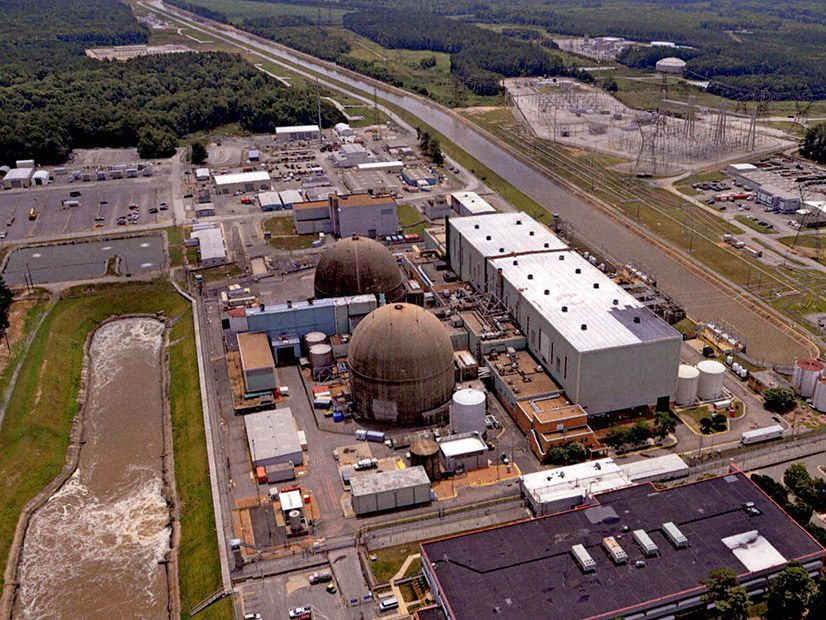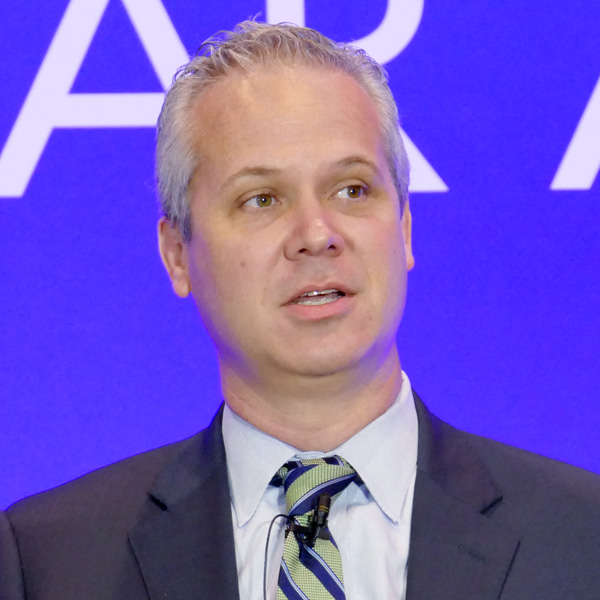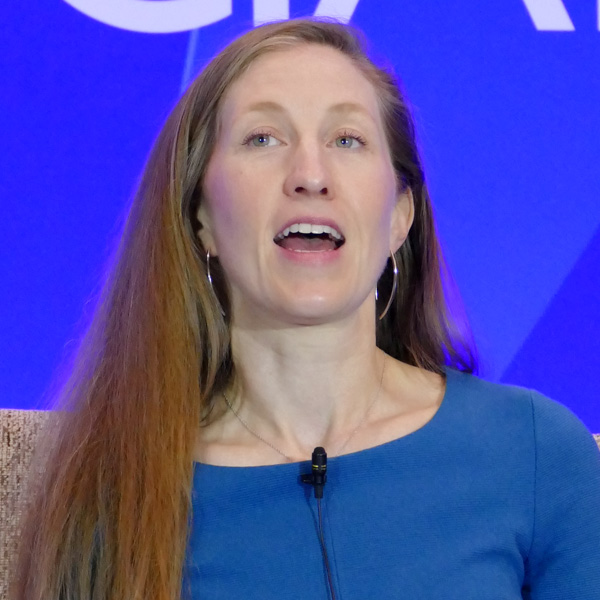Virginia Gov. Glenn Youngkin (R) is doubling down on his efforts to bring the nation’s first commercial small modular nuclear reactor (SMR) to abandoned coalfields of Southwest Virginia, announcing plans on Friday to provide up to $7 million in state funds to help kickstart the project.
Speaking at an abandoned mine site in the southwest corner of the state, Youngkin announced he would be proposing a $10 million Virginia Power Innovation Fund in his next budget, with half the money dedicated to “our moonshot mission to establish the very first small modular reactor right here in Southwest Virginia within the next 10 years.”
Earlier in the day, the governor and U.S. Rep. Morgan Griffith (R-Va.) announced another $10.6 million in grants from the state’s federally funded Abandoned Mine Land Economic Revitalization (AMLER) program, including another $2 million for the Energy DELTA Lab, an innovation testbed, launched Oct. 4.
The test bed is being developed with $975,000 in previously announced AMLER funds and has been in the works for four years, according to the project’s website, which makes no mention of nuclear as part of its plan for future energy development.
Rather, the website outlines two potential projects. One would seek to draw in data centers, which would be cooled with geothermal technology using “the billions of gallons in water collected in underground mines.” The second, called Project Energizer, would develop modular pumped hydro storage that could be paired with solar or wind projects to provide dispatchable baseload power.
 Nuclear power currently provides about 29% of Virginia’s electricity. | EIA
Nuclear power currently provides about 29% of Virginia’s electricity. | EIA
But Youngkin has been keenly focused on the idea of bringing nuclear development to the southwestern part of the state since the release of what he called Friday his “all American, all-of-the-above“ energy plan on Oct. 3. The plan sees Virginia as particularly well positioned to lead SMR development, pointing to nuclear engineering programs at Virginia Commonwealth University and Virginia Tech, and companies such as Huntington Ingalls, which maintains nuclear submarines and aircraft carriers at Norfolk Naval Base. (See Gov. Youngkin Releases 2022 Energy Plan.)
“By marshaling the state and federal resources, we will establish a Virginia nuclear innovation hub that will bring together Virginia’s nuclear stakeholders … universities, corporate interests [and] research dollars to develop new and emerging nuclear technologies for deployment right here in the commonwealth,” Youngkin said Friday. “And we will work with our regional allies to go after more than our fair share.”
He envisioned the hub performing “research on advanced material manufacturing and design; methods to improve reactor lifespans and ensure safe operations; on advanced computation and machine learning; on workforce training; and strategies to improve the nuclear fuel cycle and supply chain, including recycling spent nuclear fuel.”
Alireza Haghighat, director of the Nuclear Science and Engineering Laboratory at Virginia Tech, stressed the integral role of nuclear as clean, baseload power. “Nuclear is a must to continue not only affordable, reliable energy [but] also to achieve what we all look for: zero carbon emissions. … You have to be realistic and just follow the science.”
According to figures from the U.S. Energy Information Administration, Virginia’s two nuclear plants, owned by Dominion Energy (NYSE:D), currently provide 29% of the state’s electric power. Hydropower and non-hydro renewables account for 11%, with fossil fuels — predominantly natural gas — providing the other 60%.
One of the Dominion plants, the Surry nuclear plant, won a 20-year license extension from the Nuclear Regulatory Commission in 2021. The commission is reviewing the utility’s application for a similar extension for its North Anna plant.
 Surry nuclear power plant | NRC
Surry nuclear power plant | NRC
Under the 2020 Virginia Clean Economy Act (VCEA), Dominion is required to decarbonize its electricity supplies by 2045, increasing clean power 3% per year through 2030 and 4% per year through 2045. Youngkin’s Energy Plan criticizes the VCEA as mandating the retirement of baseload resources and recommends that it be reauthorized every five years.
Local Criticism
While the small audience at Friday’s event responded enthusiastically, Youngkin’s announcement drew quick criticism from local environmental and community groups.
“The announcement comes as a surprise to many key stakeholders in the region,” according to a press release from Appalachian Voices, a community group that has supported the growth of solar in Southwest Virginia. “No local citizen groups were informed about the governor’s visit — nor have any been invited to participate in the planning of the location and development of the new energy infrastructure.”
“Project development processes that leave out community voices [are] the wrong way to build support for a proposal,” said Rebecca Shelton, director of policy and organizing at the Appalachian Citizens’ Law Center, who was quoted in the release. “Time and again, the way residents learn about a new project is through a press announcement. There is every reason to be skeptical about the benefits of a project when it’s planned behind closed doors.”
While Appalachian Voices supports clean energy and the development of new technologies, Adam Wells, the group’s regional director of community and economic development, called for “a new model of energy production that centers equity, justice and communities. So far, it appears that this [nuclear] effort misses that opportunity — all the more alarming given the well documented social and environmental problems associated with nuclear energy.”
Groups like Appalachian Voices and The Nature Conservancy have been pushing forward on bringing solar development to Southwest Virginia and its abandoned mining sites.
Earlier in the week, Appalachian Voices and other members of the region’s Solar Workgroup cut the ribbon on a new rooftop solar installation at Wise Elementary School, one of 12 schools in Wise and Lee counties the workgroup is helping to go solar. Apprentices from a local community college training program worked on the project, according to a press release.
The Nature Conservancy is also developing 120 MW of utility-scale solar on abandoned mine sites in its Cumberland Forest Project, 253,000 acres of preserved forest land in Southwest Virginia and along the Tennessee-Kentucky border.



